第27章 CHAPTER Nature and Art(3)
Like in general to the first, unlike it in detail, resembling it only as the mistress may the maid. But who shall convince of charm by enumerating the features of a face! From the tiles of its terrace to the encrusted gables that drape it as with some rich bejewelled mantle falling about it in the most graceful of folds, it is the very eastern princess of a building standing in the majesty of her court to give you audience.
A pebbly path, a low flight of stone steps, a pause to leave your shoes without the sill, and you tread in the twilight of reverence upon the moss-like mats within. The richness of its outer ornament, so impressive at first, is, you discover, but prelude to the lavish luxury of its interior. Lacquer, bronze, pigments, deck its ceiling and its sides in such profusion that it seems to you as if art had expanded, in the congenial atmosphere, into a tropical luxuriance of decoration, and grew here as naturally on temples as in the jungle creepers do on trees. Yet all is but setting to what the place contains; objects of bigotry and virtue that appeal to the artistic as much as to the religious instincts of the devout. More sacred still are the things treasured in the sanctum of the priests. There you will find gems of art for whose sake only the most abnormal impersonality can prevent you from breaking the tenth commandment.
Of the value set upon them you can form a distant approximation from the exceeding richness and the amazing number of the silk cloths and lacquered boxes in which they are so religiously kept. As you gaze thus, amid the soul-satisfying repose of the spot, at some masterpiece from the brush of Motonobu, you find yourself wondering, in a fanciful sort of way, whether Buddhist contemplation is not after all only another name for the contemplation of the beautiful, since devotees to the one are ex officio such votaries of the other.
Dissimilar as are these two glimpses of Japanese existence, in one point the bustling street and the hushed temple are alike,--in the nameless grace that beautifies both.
This spirit is even more remarkable for its all-pervasiveness than for its inherent excellence. Both objectively and subjectively its catholicity is remarkable. It imbues everything, and affects everybody. So universally is it applied to the daily affairs of life that there may be said to be no mechanical arts in Japan simply because all such have been raised to the position of fine arts. The lowest artisan is essentially an artist. Modern French nomenclature on the subject, in spite of the satire to which the more prosaic Anglo-Saxon has subjected it, is peculiarly applicable there.
To call a Japanese cook, for instance, an artist would be but the barest acknowledgment of fact, for Japanese food is far more beautiful to look at than agreeable to eat; while Tokio tailors are certainly masters of drapery, if they are sublimely oblivious to the natural modelings of the male or female form.
On the other hand, art is sown, like the use of tobacco, broadcast among the people. It is the birthright of the Far East, the talent it never hides. Throughout the length and breadth of the land, and from the highest prince to the humblest peasant, art reigns supreme.
Now such a prevalence of artistic feeling implies of itself impersonality in the people. At first sight it might seem as if science did the same, and that in this respect the one hemisphere offset the other, and that consequently both should be equally impersonal. But in the first place, our masses are not imbued with the scientific spirit, as theirs are with artistic sensibility.
Who would expect of a mason an impersonal interest in the principles of the arch, or of a plumber a non-financial devotion to hydraulics?
Certainly one would be wrong in crediting the masses in general or European waiters in particular with much abstract love of mathematics, for example. In the second place, there is an essential difference in the attitude of the two subjects upon personality. Emotionally, science appeals to nobody, art to everybody. Now the emotions constitute the larger part of that complex bundle of ideas which we know as self. A thought which is not tinged to some extent with feeling is not only not personal; properly speaking, it is not even distinctively human, but cosmical. In its lofty superiority to man, science is unpersonal rather than impersonal. Art, on the other hand, is a familiar spirit. Through the windows of the senses she finds her way into the very soul of man, and makes for herself a home there.
But it is to his humanity, not to his individuality, that she whispers, for she speaks in that universal tongue which all can understand.
Examples are not wanting to substantiate theory. It is no mere coincidence that the two most impersonal nations of Europe and Asia respectively, the French and the Japanese, are at the same time the most artistic. Even politeness, which, as we have seen, distinguishes both, is itself but a form of art,--the social art of living agreeably with one's fellows.
This impersonality comes out with all the more prominence when we pass from the consideration of art in itself to the spirit which actuates that art, and especially when we compare their spirit with our own. The mainsprings of Far Eastern art may be said to be three: Nature, Religion, and Humor. Incongruous collection that they are, all three witness to the same trait. For the first typifies concrete impersonality, the second abstract impersonality, while the province of the last is to ridicule personality generally.